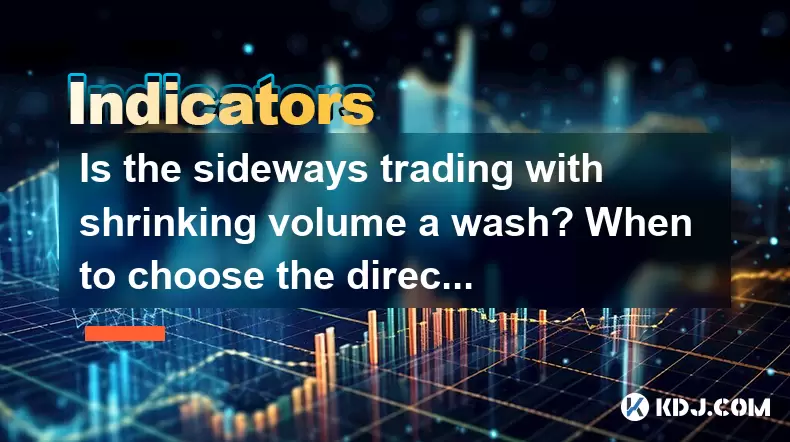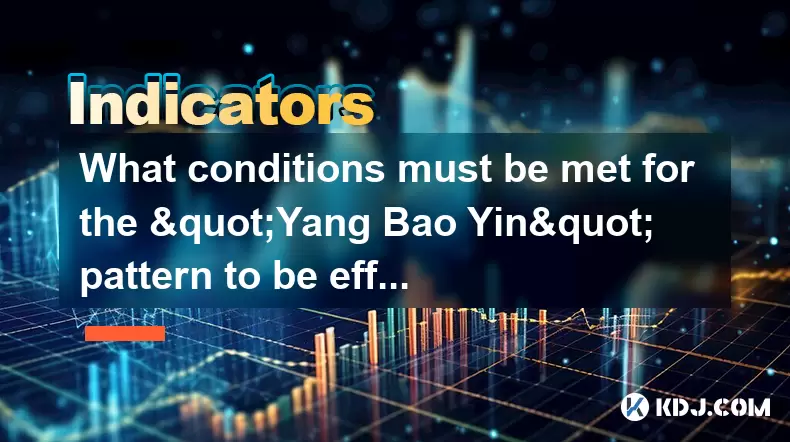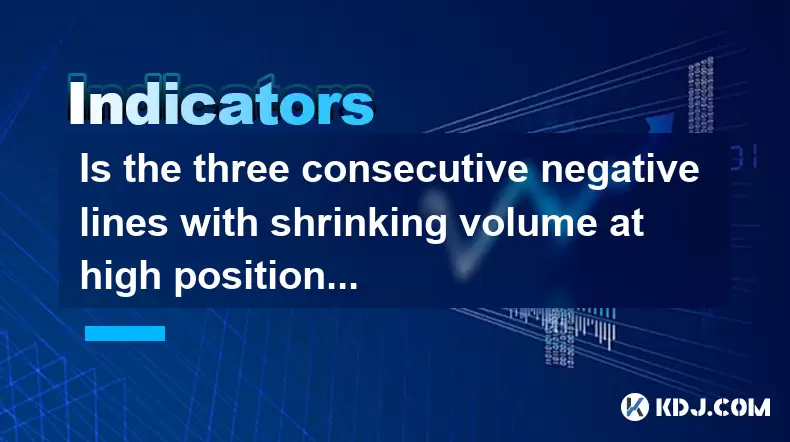-
 Bitcoin
Bitcoin $105,575.5012
1.85% -
 Ethereum
Ethereum $2,564.5217
3.74% -
 Tether USDt
Tether USDt $1.0004
-0.01% -
 XRP
XRP $2.1452
2.16% -
 BNB
BNB $652.0550
1.17% -
 Solana
Solana $147.1705
3.26% -
 USDC
USDC $1.0000
0.03% -
 Dogecoin
Dogecoin $0.1779
3.82% -
 TRON
TRON $0.2712
0.96% -
 Cardano
Cardano $0.6379
2.29% -
 Hyperliquid
Hyperliquid $41.7950
8.57% -
 Sui
Sui $3.0390
2.83% -
 Bitcoin Cash
Bitcoin Cash $444.7546
10.90% -
 Chainlink
Chainlink $13.3217
2.93% -
 UNUS SED LEO
UNUS SED LEO $9.0330
1.67% -
 Avalanche
Avalanche $19.2972
3.29% -
 Stellar
Stellar $0.2591
1.53% -
 Toncoin
Toncoin $3.0119
2.75% -
 Shiba Inu
Shiba Inu $0.0...01207
4.79% -
 Hedera
Hedera $0.1584
4.60% -
 Litecoin
Litecoin $86.1815
5.14% -
 Polkadot
Polkadot $3.8108
2.61% -
 Ethena USDe
Ethena USDe $1.0006
0.01% -
 Monero
Monero $309.5977
2.25% -
 Dai
Dai $1.0000
0.01% -
 Bitget Token
Bitget Token $4.5499
1.84% -
 Uniswap
Uniswap $7.5738
9.50% -
 Pepe
Pepe $0.0...01117
5.49% -
 Aave
Aave $289.1514
8.48% -
 Pi
Pi $0.5786
3.79%
Is the sideways trading with shrinking volume a wash? When to choose the direction?
Sideways trading with shrinking volume often precedes a breakout; traders should monitor volume spikes and price action at support/resistance levels to choose the right direction.
Jun 11, 2025 at 12:57 am

In the world of cryptocurrency trading, sideways trading with shrinking volume is a phenomenon that often leaves traders puzzled. This situation, where the price of a cryptocurrency moves within a narrow range and trading volume decreases, can be a precursor to a significant price movement. Understanding this pattern and knowing when to choose a direction can be crucial for making informed trading decisions.
Understanding Sideways Trading with Shrinking Volume
Sideways trading, also known as range-bound trading, occurs when the price of a cryptocurrency oscillates between two horizontal levels without making significant progress in either direction. When this movement is accompanied by shrinking volume, it suggests that fewer traders are participating in the market, and the current price range might be losing its appeal.
The key to interpreting this pattern lies in recognizing the potential for a breakout. When volume decreases, it can indicate that the market is consolidating before making a decisive move. Traders need to monitor this situation closely to identify the right moment to enter or exit a position.
Identifying the Breakout
To determine when a breakout might occur, traders should look for signs that the market is preparing to move in a specific direction. One of the first indicators is a sudden increase in volume. When the trading volume spikes, it often signals that more traders are entering the market, which can lead to a breakout.
Another crucial factor is the price action at the support and resistance levels. If the price repeatedly tests these levels and fails to break through, it can indicate that a significant move is imminent. Traders should pay close attention to these levels and be ready to act when the price finally breaches them.
Choosing the Direction
Deciding which direction to take after a breakout can be challenging, but there are several strategies that traders can use to make an informed decision. One approach is to analyze the overall market trend. If the broader market is in an uptrend, it might be more likely that the breakout will be to the upside. Conversely, if the market is in a downtrend, a downward breakout could be more probable.
Another method is to use technical indicators. Tools such as moving averages, the Relative Strength Index (RSI), and the Moving Average Convergence Divergence (MACD) can provide valuable insights into the market's momentum and potential direction. For instance, if the RSI is showing overbought conditions, it might suggest that a downward breakout is more likely.
Risk Management
Regardless of the chosen direction, risk management is essential in trading. Traders should always set stop-loss orders to limit potential losses if the market moves against their position. Additionally, it's important to manage position sizes and not risk more than a small percentage of the trading capital on any single trade.
By employing proper risk management techniques, traders can protect their capital and stay in the game long enough to benefit from the eventual breakout.
Timing the Entry
Timing the entry into a trade after a breakout is crucial for maximizing potential profits. One effective strategy is to wait for a retest. After a breakout, the price often returns to the breakout level, providing a second chance to enter the trade at a more favorable price.
To execute this strategy, traders should:
- Monitor the price action: Watch the price closely after the initial breakout.
- Identify the retest: Look for the price to return to the breakout level.
- Confirm the retest: Ensure that the price holds above the breakout level if it's an upward breakout, or below if it's a downward breakout.
- Enter the trade: Place a buy order if it's an upward breakout, or a sell order if it's a downward breakout, once the retest is confirmed.
Analyzing Market Sentiment
In addition to technical analysis, market sentiment can play a significant role in determining the direction of a breakout. Sentiment indicators, such as social media sentiment analysis and news sentiment, can provide insights into the overall mood of the market.
If the sentiment is overwhelmingly positive, it could suggest that an upward breakout is more likely. Conversely, negative sentiment might indicate a higher probability of a downward breakout. Traders should incorporate these sentiment indicators into their analysis to make more informed decisions.
Conclusion
Navigating sideways trading with shrinking volume requires a combination of technical analysis, risk management, and an understanding of market sentiment. By closely monitoring the price action, volume, and sentiment, traders can identify potential breakouts and choose the right direction to maximize their profits.
Frequently Asked Questions
Can sideways trading with shrinking volume last indefinitely?
Sideways trading with shrinking volume is typically a temporary phase. It often precedes a breakout as the market consolidates before making a significant move. However, the duration can vary, and traders should remain patient and vigilant.
How can I differentiate between a true breakout and a false breakout?
To distinguish between a true and false breakout, traders should look for sustained volume and price action. A true breakout is often accompanied by a significant increase in volume and a clear move away from the breakout level. A false breakout, on the other hand, might see the price quickly returning to the previous range with little to no volume increase.
What are some common mistakes traders make during sideways trading with shrinking volume?
Common mistakes include entering trades prematurely, ignoring risk management, and overtrading. Traders should wait for clear signals before entering a trade, always use stop-loss orders, and avoid trading excessively during periods of low volume and price movement.
How does market manipulation affect sideways trading with shrinking volume?
Market manipulation can influence sideways trading by artificially maintaining the price within a certain range. Whales or large traders might engage in spoofing or pump and dump schemes to control the price and volume. Traders should be aware of these tactics and use technical and sentiment analysis to make informed decisions.
Disclaimer:info@kdj.com
The information provided is not trading advice. kdj.com does not assume any responsibility for any investments made based on the information provided in this article. Cryptocurrencies are highly volatile and it is highly recommended that you invest with caution after thorough research!
If you believe that the content used on this website infringes your copyright, please contact us immediately (info@kdj.com) and we will delete it promptly.
- Trezor Has Officially Integrated 1inch Fusion Into Its Trezor Suite
- 2025-06-14 10:20:12
- Pi Network's Token (PI) Forms Bullish "Double Bottom" Pattern, Setting the Stage for a Short Squeeze
- 2025-06-14 10:20:12
- Trezor Has Officially Integrated 1inch Fusion
- 2025-06-14 10:15:24
- In a Bifurcated Crypto Market, Both Legacy Projects and Emerging Infrastructures Are Offering Compelling Narratives
- 2025-06-14 10:15:24
- Shiba Inu (SHIB) token burn portal is live on Shibarium
- 2025-06-14 10:14:09
- Solana (SOL) price up 4.3% as open interest nears all-time highs, spot ETF approval odds jump to 91%
- 2025-06-14 10:14:09
Related knowledge

How to calculate the probability of trend continuation after the MACD column divergence?
Jun 14,2025 at 08:01am
Understanding MACD Column DivergenceThe Moving Average Convergence Divergence (MACD) is a widely used technical indicator in cryptocurrency trading. The MACD column, also known as the histogram, represents the difference between the MACD line and the signal line. When price makes a new high or low but the MACD histogram does not confirm this movement, a...

What are the volume requirements for adjusting the K line in the "rising three methods" pattern?
Jun 14,2025 at 07:50am
Understanding the 'Rising Three Methods' Pattern in Cryptocurrency TradingThe 'rising three methods' pattern is a bullish continuation candlestick formation that traders often use to identify potential upward momentum in cryptocurrency price charts. This pattern typically appears during an uptrend and suggests that the trend is likely to continue after ...

What conditions must be met for the "Yang Bao Yin" pattern to be effective?
Jun 14,2025 at 06:42am
Understanding the 'Yang Bao Yin' Pattern in Cryptocurrency TradingThe Yang Bao Yin pattern is a candlestick formation commonly observed in technical analysis within the cryptocurrency market. This pattern typically signals a potential bullish reversal after a downtrend. However, for this pattern to be effective and reliable, certain conditions must be m...

Is the three consecutive negative lines with shrinking volume at high positions a signal that the main force has finished shipping?
Jun 14,2025 at 09:56am
Understanding the Concept of Three Consecutive Negative LinesIn cryptocurrency trading, three consecutive negative lines refer to a situation where an asset's price chart shows three successive candlesticks with closing prices lower than their opening prices. This pattern typically indicates bearish sentiment in the market. When this occurs at high posi...

Is it an opportunity for the long positive line with large volume to break through the platform and then shrink back?
Jun 14,2025 at 04:42am
Understanding the Long Positive Line with Large VolumeIn technical analysis, a long positive line refers to a candlestick pattern where the closing price is significantly higher than the opening price, often indicating strong buying pressure. When this occurs alongside large volume, it suggests that market participants are actively involved in pushing t...

How to grasp the 60-minute KD oversold + 15-minute bottom divergence?
Jun 14,2025 at 06:15am
Understanding the 60-Minute KD Oversold SignalThe KD indicator, also known as the Stochastic Oscillator, is a momentum oscillator that compares a particular closing price of a cryptocurrency to its price range over a given time period. When analyzing 60-minute charts, traders often look for oversold conditions in the KD line, which typically occur when ...

How to calculate the probability of trend continuation after the MACD column divergence?
Jun 14,2025 at 08:01am
Understanding MACD Column DivergenceThe Moving Average Convergence Divergence (MACD) is a widely used technical indicator in cryptocurrency trading. The MACD column, also known as the histogram, represents the difference between the MACD line and the signal line. When price makes a new high or low but the MACD histogram does not confirm this movement, a...

What are the volume requirements for adjusting the K line in the "rising three methods" pattern?
Jun 14,2025 at 07:50am
Understanding the 'Rising Three Methods' Pattern in Cryptocurrency TradingThe 'rising three methods' pattern is a bullish continuation candlestick formation that traders often use to identify potential upward momentum in cryptocurrency price charts. This pattern typically appears during an uptrend and suggests that the trend is likely to continue after ...

What conditions must be met for the "Yang Bao Yin" pattern to be effective?
Jun 14,2025 at 06:42am
Understanding the 'Yang Bao Yin' Pattern in Cryptocurrency TradingThe Yang Bao Yin pattern is a candlestick formation commonly observed in technical analysis within the cryptocurrency market. This pattern typically signals a potential bullish reversal after a downtrend. However, for this pattern to be effective and reliable, certain conditions must be m...

Is the three consecutive negative lines with shrinking volume at high positions a signal that the main force has finished shipping?
Jun 14,2025 at 09:56am
Understanding the Concept of Three Consecutive Negative LinesIn cryptocurrency trading, three consecutive negative lines refer to a situation where an asset's price chart shows three successive candlesticks with closing prices lower than their opening prices. This pattern typically indicates bearish sentiment in the market. When this occurs at high posi...

Is it an opportunity for the long positive line with large volume to break through the platform and then shrink back?
Jun 14,2025 at 04:42am
Understanding the Long Positive Line with Large VolumeIn technical analysis, a long positive line refers to a candlestick pattern where the closing price is significantly higher than the opening price, often indicating strong buying pressure. When this occurs alongside large volume, it suggests that market participants are actively involved in pushing t...

How to grasp the 60-minute KD oversold + 15-minute bottom divergence?
Jun 14,2025 at 06:15am
Understanding the 60-Minute KD Oversold SignalThe KD indicator, also known as the Stochastic Oscillator, is a momentum oscillator that compares a particular closing price of a cryptocurrency to its price range over a given time period. When analyzing 60-minute charts, traders often look for oversold conditions in the KD line, which typically occur when ...
See all articles

























































































